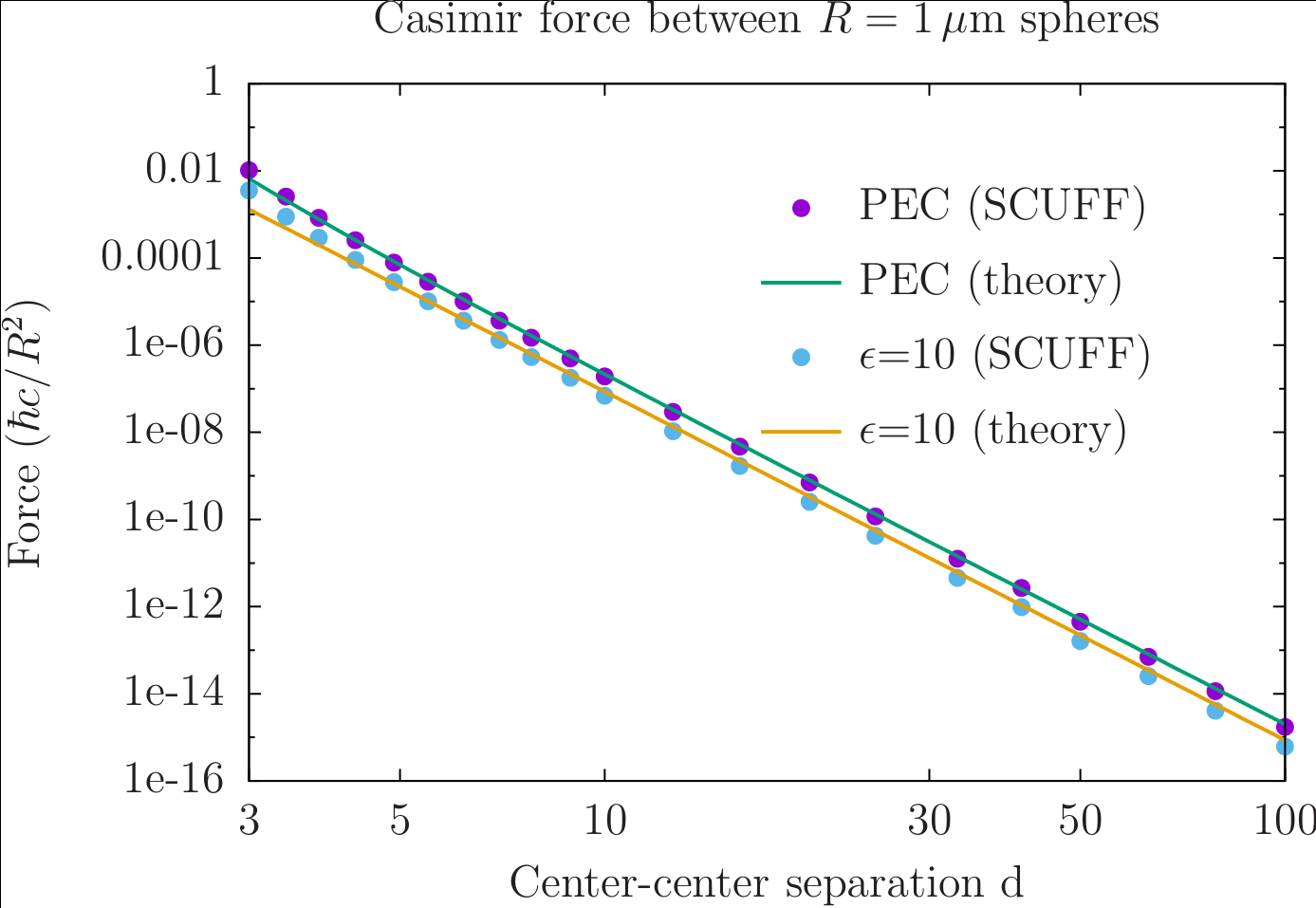Equilibrium Casimir forces between spheres
This test validates the scuff-cas3d of the scuff-em code suite by using it to compute the equilibrium Casimir force between identical spheres at various separation distances. We consider both perfectly electrically conducting (PEC) and dielectric spheres.
Analytical solution
An analytical formula for the distance-dependent Casimir energy of two identical PEC spheres of radius separated by a distance was obtained by T. Emig et al. in this paper:
Their asymptotic () formula for the energy, and the force formula obtained by differentiating it, are
where the first few coefficients are
-
for PEC spheres:
-
for dielectric spheres with static relative permittivity :
scuff-em solution
The Casimir energy and force between two PEC spheres and between two dielectric spheres may be computed using scuff-cas3d as follows:
% scuff-cas3d --geometry PECSpheres_501.scuffgeo --translist Spheres.trans --energy --zforce % scuff-cas3d --geometry E10Spheres_501.scuffgeo --translist Spheres.trans --energy --zforce
Here the two .scuffgeo files
(PECSpheres_501.scuffgeo and E10Spheres_501.scuffgeo]
describe the two geometric configurations
(two PEC spheres and two dielectric spheres of radius m
separated by an initial center-center distance of =3 m) while
Spheres.trans specifies the list of center-center
separation distances at which we compute the energy and force.
(Both geometries refer to the same surface mesh file for the
sphere, Sphere_327.msh.
The above calculations produce output files named
PECSpheres_327.out and
E10Spheres_327.out. Plotting against
the theoretical predictions of Emig et. al (referenced above)
yields good agreement:
 .
.
Here's the gnuplot script I used to produce this
plot: Plotter.gp.